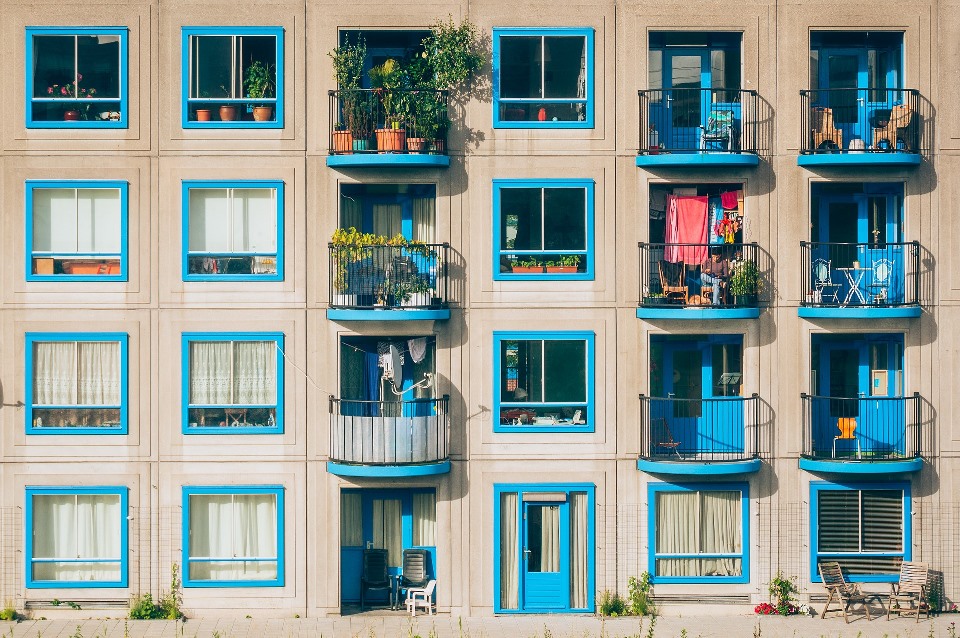New apartment buildings are going up every month that are on the cutting edge of energy efficiency and sustainability, using everything from 3D printers to air-filtering concrete to rein in emissions and waste. But older, conventional (or historic) buildings are being retrofitted and updated with technology to be significantly more energy efficient and environmentally friendly.
The American Council for an Energy-Efficient Economy estimates that upgrades in buildings with five or more units can result in energy savings of up to 30%, adding up to a potential $3.4 billion in savings across the entire multifamily housing sector. Let’s take a look at a few of the ways older apartments are going green.
New Windows
Replacing all of the buildings windows with “low-e” products can contribute to tremendous savings around the building. These low-emissivity windows have a thin metallic covering on them that allows light to pass through while blocking the transfer of heat, meaning each unit and room will stay warmer through the winter and cooler through the summer. Depending on the retrofit’s budget and your building’s needs, you can find low-e windows that have coatings on both sides of the glass, or limit coating to one side of the glass to more specifically target escaping or unwanted energy.
High-Efficiency Appliances
A small change that can have a huge impact on apartment building water consumption is swapping standard washing machines for high-efficiency machines, which can reduce the amount of water used during a normal cycle from 35–45 gallons to 15–25 gallons. For a five-unit building, estimating about two loads of laundry per unit per week, that’s a savings of more than 15,000 gallons per year. High-efficiency dishwashers offer similar benefits and can shrink water usage from 10 gallons per cycle to as little as 4.5 gallons.
Cool Roofing
Consider replacing standard roofs — which can create heat sinks that lead to wasted energy — with metal or “green” roofs. Although the initial investment is higher, metal roofing is durable, recyclable, fire resistant, and lasts longer than typical roofing. By reflecting sunlight and therefore heat, a metal roof can lower your cooling bill. Vegetative roofing also benefits energy consumption by insulating your building and mitigating heat-island effects. It also curbs stormwater runoff, which is a major contributor to pollution.
High-Performance HVAC Systems
Typically, the HVAC system is a building’s single largest energy suck, accounting for about 39% of commercial buildings’ energy use. Adding a higher level of control over your building’s heating, ventilating, and air-conditions system allows you to utilize energy more effectively. The Whole Building Design Guide notes that HVAC systems are designed to meeting heating and cooling needs that occur only 1% to 2.5% of the time, and by adding controls, you can adjust your system to to operate more efficiently outside of those peak times.
Low-Flow Faucets and Showerheads
Low-flow aerators, which can simply be screwed on to existing faucets, can reduce water usage from up to 5 gallons per minute to between 1 and 2 gallons per minute. Standard showerheads often average more than 3 gallons per minute, whereas low-flow models amp up the pressure and reduce water usage by about half, without sacrificing performance. Aerators can cost as little as $2 each, and showerheads range between $5 and $17 each.
To see your building’s potential savings, run an energy simulation from EnergyPlus, visit the Technology Performance Exchange, or consult a local outfitter. In almost every case, the energy savings will more than pay for the upgrades within only a few years.
About the Author
Sam Radbil is a contributing member of the marketing and communications team at ABODO, an online apartment marketplace. ABODO was founded in 2013 in Madison, Wisconsin. In just three years, the company has grown to more than 30 employees, raised over $8 million in outside funding, and helps more than half a million renters find a new home each month.

